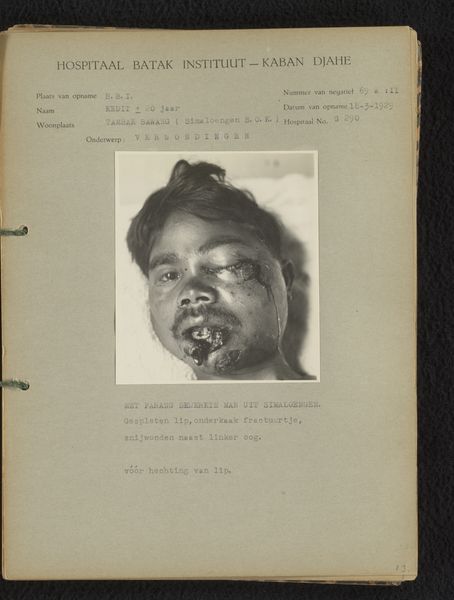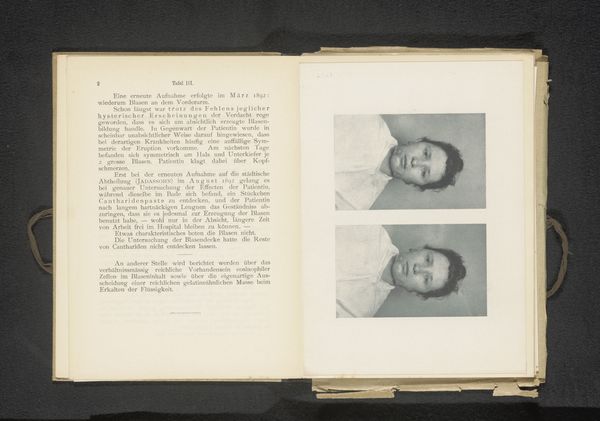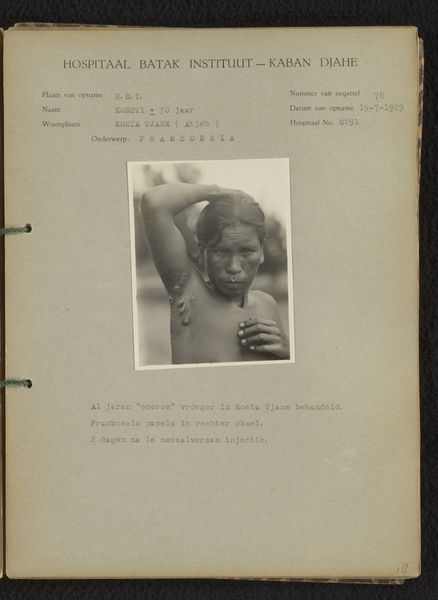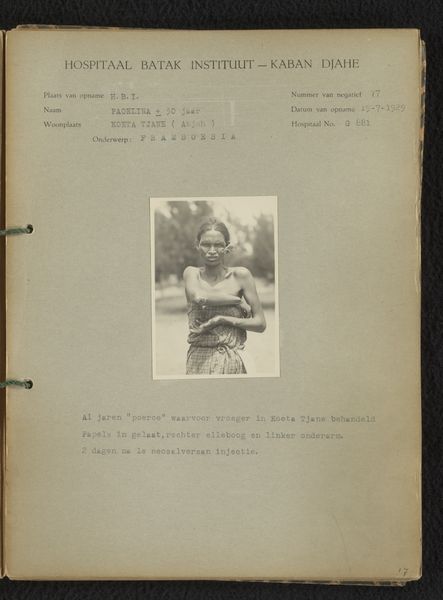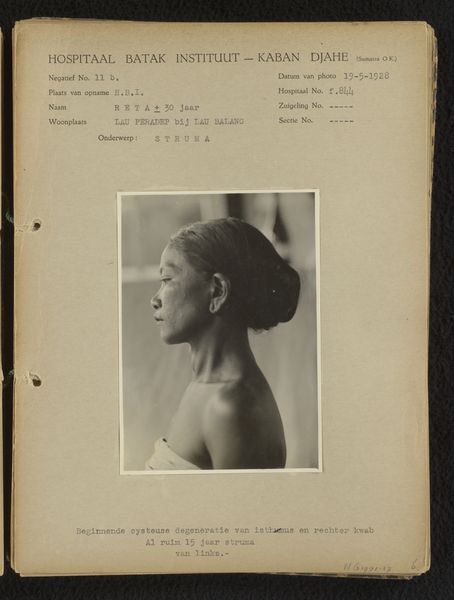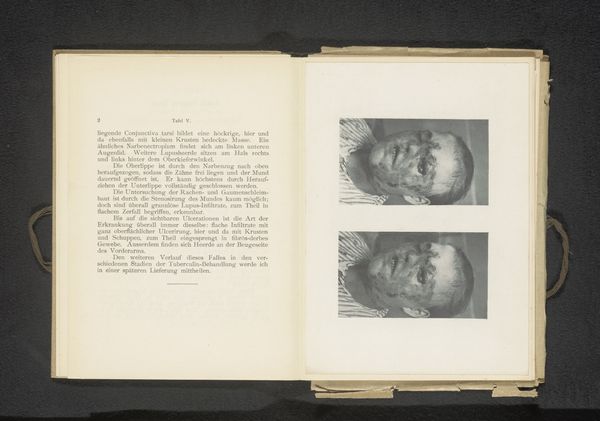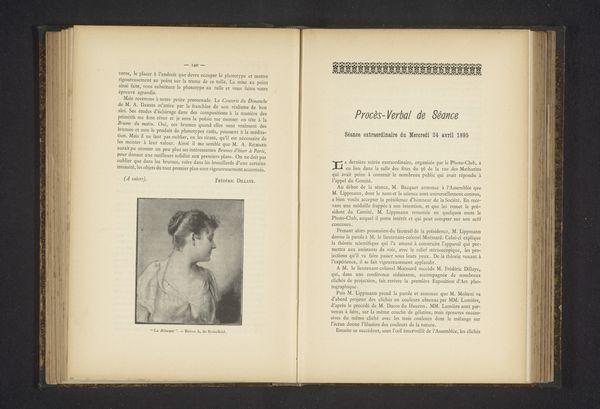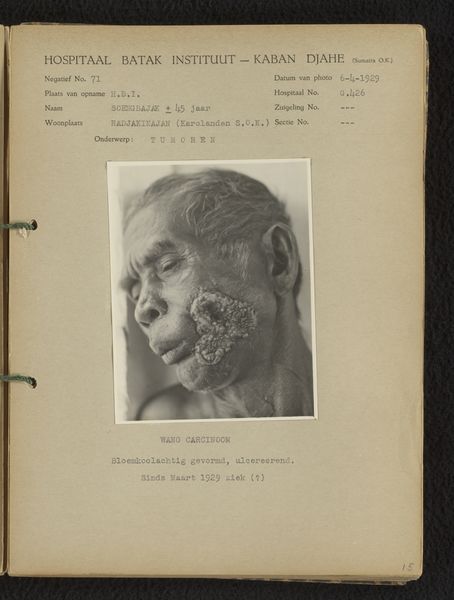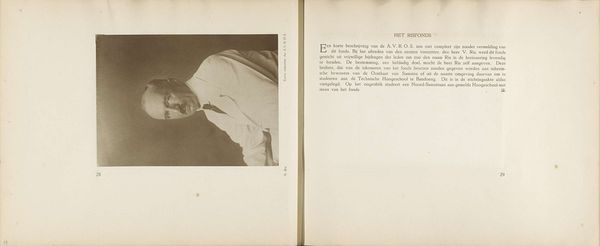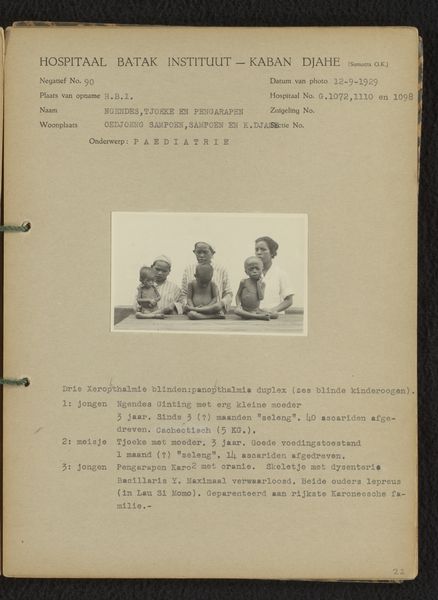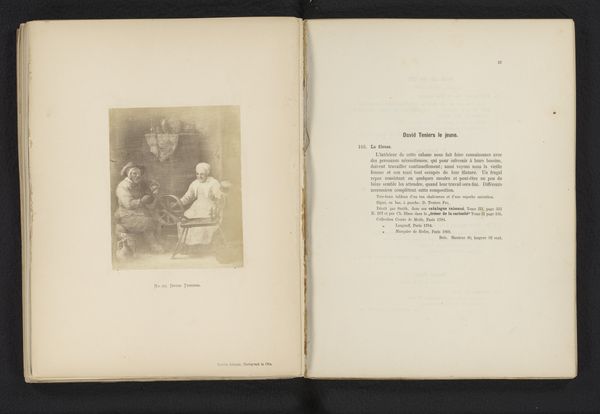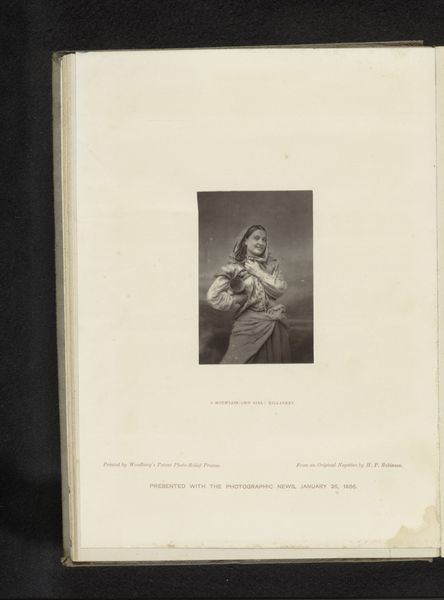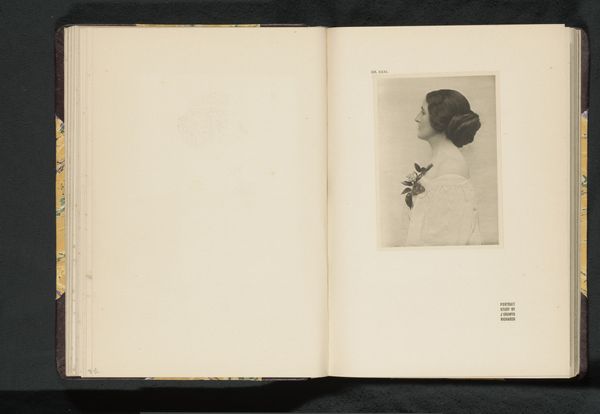
photography
#
portrait
#
asian-art
#
photography
Dimensions: height 102 mm, width 115 mm, height 280 mm, width 210 mm
Copyright: Rijks Museum: Open Domain
Editor: This is a photograph from 1929 titled "Met parang bewerkte man uit Simaloengen," so "Man from Simaloengen Wounded by a Parang," it's from the Hospitaal Batak Instituut. It looks like a medical record of someone's injuries. What historical and social narratives do you see at play here? Curator: Immediately, I see a convergence of power, representation, and violence embedded within a colonial context. The photograph, taken by a Western institution—a hospital, no less—depicts a man from Simaloengen with severe wounds, likely inflicted by a parang, a type of machete. Editor: So what does that imply about the dynamic? Curator: We must consider the power dynamics inherent in this situation. Who is taking the photo, and why? How does this image contribute to the larger colonial narrative about the 'other'? What is the power imbalance in viewing an injured man as a photographic subject rather than focusing on care and consent? Editor: That makes me think about how medical photography itself has historically been used. Curator: Precisely! The photo also brings to mind questions of identity, race, and the very gaze through which the colonized subject is viewed. The detached, almost clinical nature of the record underscores a historical power imbalance. Who decides what is documented and how, is crucial in understanding not just the event but the lasting impact of colonial practices on how we perceive this person and his story. This isn’t simply about an injury; it's about the visual and discursive violence inflicted upon colonized bodies. What do you take away from this understanding? Editor: I’m seeing how this seemingly simple photo opens up really difficult, but necessary, conversations about power, representation, and historical violence. Thank you.
Comments
No comments
Be the first to comment and join the conversation on the ultimate creative platform.
